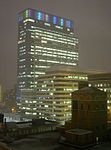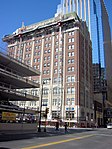2020 Minneapolis false rumors riot

False rumors of a police shooting resulted in rioting, arson, and looting in the U.S. city of Minneapolis from August 26–28, 2020. The events began as a reaction to the suicide of Eddie Sole Jr., a 38-year old black man who was being pursued by Minneapolis police officers for his alleged involvement in a homicide. At approximately 2 p.m. on August 26, Sole died after he shot himself in the head as officers approached to arrest him. False rumors quickly spread on social media that Minneapolis police officers had fatally shot Sole. To quell unrest, Minneapolis police released closed-circuit television surveillance footage that captured Sole's suicide, which was later confirmed by a Hennepin County Medical Examiner's autopsy report.The August riot occurred as the city was still dealing with the aftermath of the George Floyd protests and riots three months prior. Misinformation about the manner of Floyd's murder led to persistent mistrust between city residents and public officials. On the night of August 26, 2020, at least 132 people were arrested for violence and looting, as damage to 77 properties occurred in the Minneapolis–Saint Paul metropolitan region, including five buildings that were set on fire. Minnesota government officials amassed nearly 1,000 members of law enforcement and 400 Minnesota National Guard troops took keep the peace. An 8 p.m. curfew was implemented on August 27, 2020, with 30 people being arrested in the first hour. During the duration of the curfew until it expired at 6 a.m. on August 28, over 100 people were arrested, including 80 for curfew violations.A state of emergency declaration and curfew orders expired on August 31. Three Minnesota residents were later convicted of federal charges for an arson attack on the Target Corporation headquarters building the night of August 26. A Minneapolis man pled guilty to a state assault charge for striking an officer with an object during the riot.
Excerpt from the Wikipedia article 2020 Minneapolis false rumors riot (License: CC BY-SA 3.0, Authors, Images).2020 Minneapolis false rumors riot
Nicollet Mall, Minneapolis
Geographical coordinates (GPS) Address Nearby Places Show on map
Geographical coordinates (GPS)
| Latitude | Longitude |
|---|---|
| N 44.973945 ° | E -93.274809 ° |
Address
Nicollet Mall 1000
55402 Minneapolis
Minnesota, United States
Open on Google Maps








